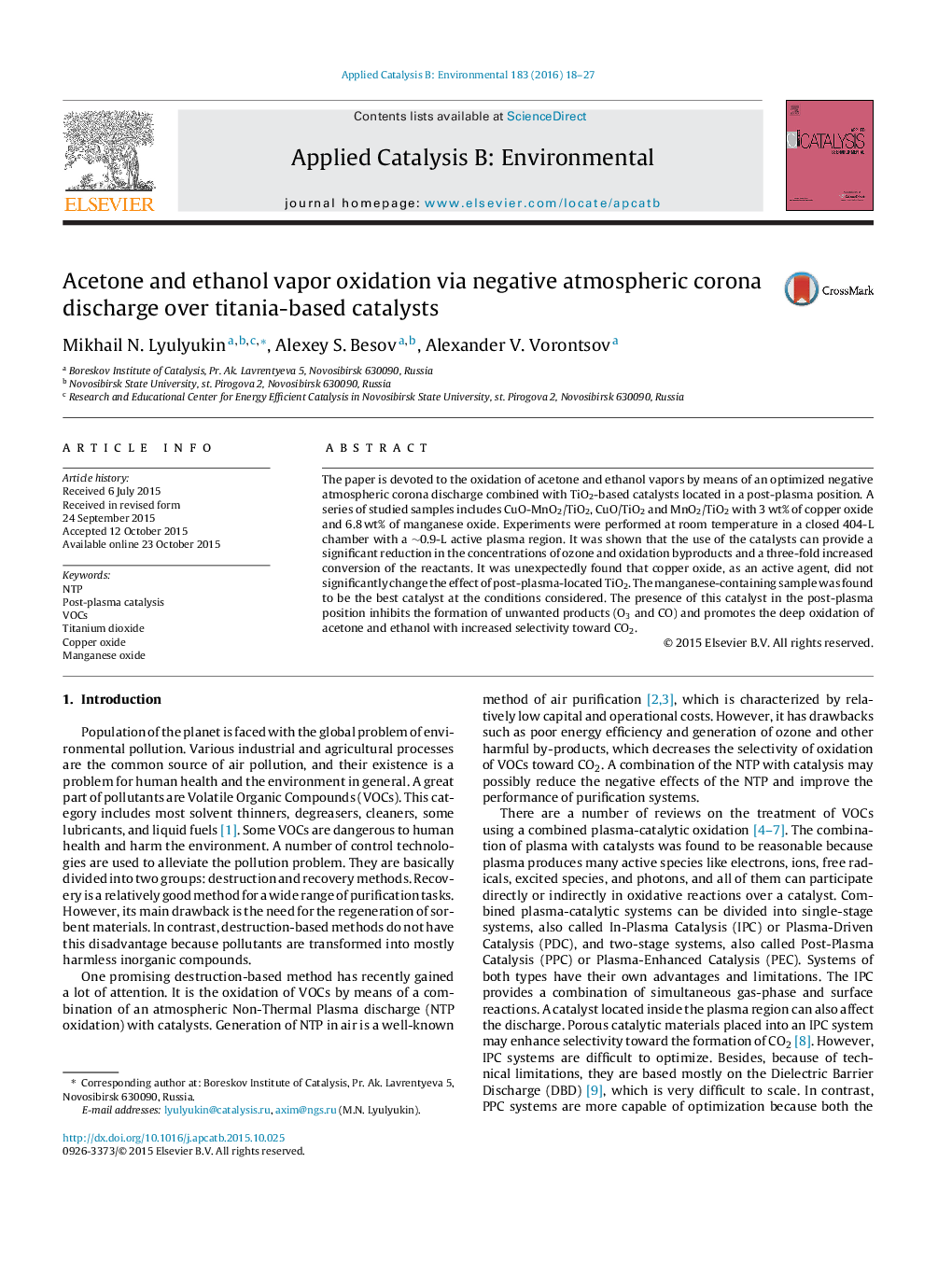| کد مقاله | کد نشریه | سال انتشار | مقاله انگلیسی | نسخه تمام متن |
|---|---|---|---|---|
| 45128 | 46401 | 2016 | 10 صفحه PDF | دانلود رایگان |
• Post-plasma located TiO2 can possibly increase energy costs.
• CuOMnO2/TiO2 activity in PPC does not strongly affected by the deposition order.
• CuO/TiO2 does not provide the improvement in oxidation at near room temperature.
• Post-plasma MnO2/TiO2 improves conversion to CO2 with lower levels of O3 and CO.
The paper is devoted to the oxidation of acetone and ethanol vapors by means of an optimized negative atmospheric corona discharge combined with TiO2-based catalysts located in a post-plasma position. A series of studied samples includes CuO-MnO2/TiO2, CuO/TiO2 and MnO2/TiO2 with 3 wt% of copper oxide and 6.8 wt% of manganese oxide. Experiments were performed at room temperature in a closed 404-L chamber with a ∼0.9-L active plasma region. It was shown that the use of the catalysts can provide a significant reduction in the concentrations of ozone and oxidation byproducts and a three-fold increased conversion of the reactants. It was unexpectedly found that copper oxide, as an active agent, did not significantly change the effect of post-plasma-located TiO2. The manganese-containing sample was found to be the best catalyst at the conditions considered. The presence of this catalyst in the post-plasma position inhibits the formation of unwanted products (O3 and CO) and promotes the deep oxidation of acetone and ethanol with increased selectivity toward CO2.
Figure optionsDownload as PowerPoint slide
Journal: Applied Catalysis B: Environmental - Volume 183, April 2016, Pages 18–27
